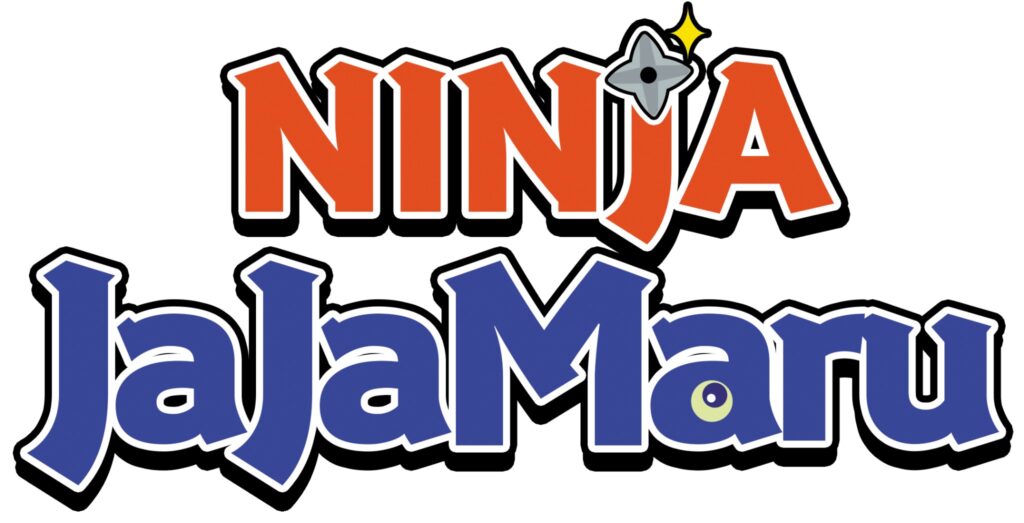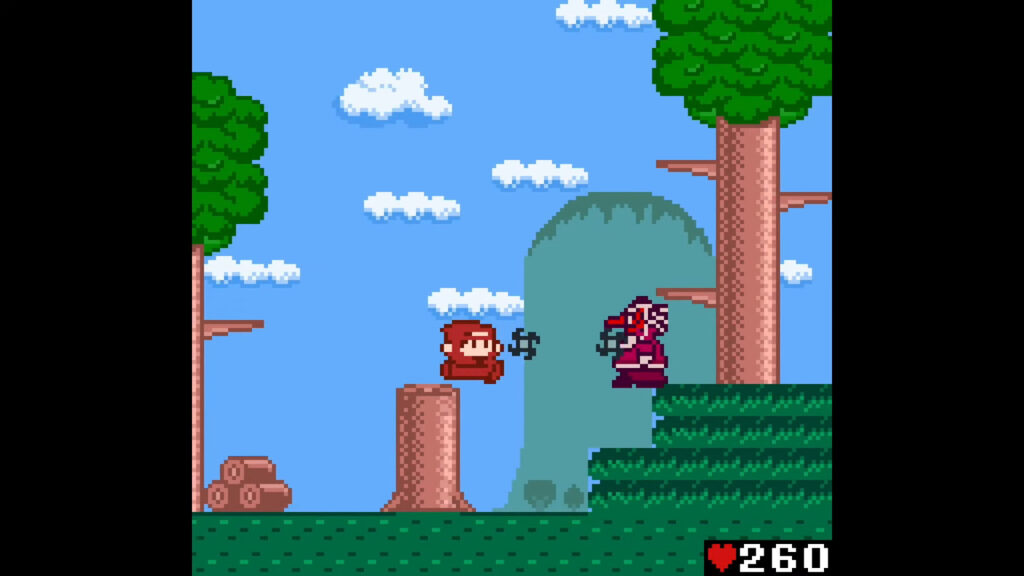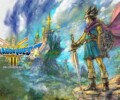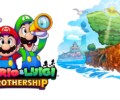
Developer: ININ Games
Publisher: ININ Games, Strictly Limited Games
Platform: Switch, PS4
Tested on: Switch
Ninja JaJaMaru Collection – Review
While the Ninja JaJaMaru series of video games has been around since 1985, it is mostly unknown to Western audiences. Well, at least until now. Not only is the beloved Japanese arcade franchise being revived with Ninja JaJaMaru: The Great Yokai Battle + Hell, the first new game in 26 years, but ININ Games is also taking this opportunity to bring the entire Ninja JaJaMaru backlog to the West for the first time. It’s a move that is certain to delight retro game enthusiasts, but does the venerable series hold enough appeal outside that specific niche? We took a look at the Ninja JaJaMaru games to see how its formula holds up after nearly four decades.
We’re straying away from our usual review format to cover the Ninja JaJaMaru series, just like we did with NeoGeo Pocket Color Selection Volume 1. Today, we’re looking at three simultaneous eShop releases (or two physical releases, with the Retro Collection, bundled together with The Great Yokai Battle + Hell if you’re purchasing them on a cartridge). These include Ninja JaJaMaru: The Great Yokai Battle + Hell, Ninja JaJaMaru: Retro Collection, and Ninja JaJaMaru: The Lost RPGs. With the Retro Collection containing five games and The Lost RPGs offering two, picking up everything will give you a total of eight games. However, most of these games are simple NES-style arcade platformers, and there’s a lot of gameplay overlap between them. As a result, it isn’t feasible to provide a full-fledged review for each Ninja JaJaMaru game without repeating ourselves frequently. Nonetheless, simplicity doesn’t necessarily mean poor quality, particularly when it comes to classic arcade titles. If you’re interested in Ninja JaJaMaru, you’ll likely want to purchase all three releases featured here anyway. As a result, rather than dissecting Super Ninja Kids or Ninja JaJaMaru’s Big Adventure separately, we thought it would be more convenient for you, the reader, to bundle everything together in this review.
The big draw here is The Great Yokai Battle + Hell, which is a modern reinterpretation of the classic arcade gameplay. Even though this is a completely new entry in the series, it sticks close to the original 8-bit arcade game. Comprising 22 levels, the aim is to simply move from screen to screen and kill everything in sight with your shurikens. There’s very little depth here, with most of the variety and replayability coming from having a selection of characters with different weapons. The +Hell in the title refers to the appropriate Hell mode, where the game ramps things up by switching up boss attack patterns, increasing the number of enemies, and even introducing a leveling system of sorts. It’s an incredibly difficult mode, but it’s also the more fun way to play The Great Yokai Battle + Hell. Before you can access it though, you’ll need to earn 10,000 coins in the base game, which will take some time. The base game is perfectly okay for what it wants to be, but you do get the feeling that you’ve seen everything the game has to offer in a handful of minutes. Playing through the entirety of 22 levels shouldn’t take most players more than an hour or two. In this regard, The Great Yokai Battle + Hell follows a similar philosophy to side-scrolling arcade shmups such as those of the Cotton series, where the main driving factor is to replay the game over and over again in order to maximize your high score. It’s a bit of a shame that accessing +Hell mode is such a tedious affair, because it’s so good that you’ll never want to return to the base game once you get a taste.
The original Ninja JaJaMaru games can be categorized as arcade games or RPGs, and have thus been separated into two separate collections accordingly. The Retro Collection contains five games. The titles included here are the original Ninja JaJaMaru game from 1985, Ninja JaJaMaru’s Big Adventure from 1986, 1990’s The Great World Adventure, which is notable for being the only Game Boy game included here, Operation Milky Way from 1991, and 1994’s Super Ninja Kids, which saw its release on the SNES instead of the Famicom like three of the aforementioned titles. The first game starts out as a simple, single-screen arcade platformer where the aim is to kill every enemy on-screen before moving on to the next level. The goal here is simply to aim for a high score. As you progress through the games in the series, there is a noticeable evolution, as the levels start to open up and the gameplay shifts towards classic arcade platformer action. In this regard, the series feels rather similar to how the Super Mario series evolved, especially when looking at the first Super Mario game on the NES compared to the first Ninja JaJaMaru game.
The so-called ‘lost’ RPGs provide a refreshing break from the arcade platformer action, even if they are very basic by today’s standards. The two titles included here are The Ninja Skill Book and Legend of the Golden Castle. In The Ninja Skill Book, you’re getting a simple RPG with turn-based combat, reminiscent of old-school Dragon Quest games. In the story, a magical book has gone missing and now Yokai are terrorizing the city. Naturally, it’s up to JaJaMaru and Princess Sakura to team up to deal with these creatures and return the book. It’s an enjoyable adventure, although our enjoyment of it was somewhat diminished by the absence of a decent explanation of some of the finer mechanics. Legend of the Golden Castle, on the other hand, feels similar to the first Legend of Mana game. This time around, Princess Sakura has been kidnapped again, and JaJaMaru must collect 8 spirits using the Holy Mandala in order to save the princess and prevent an ancient prophecy from coming true.
None of the games, including The Lost RPGs are particularly heavy on story. The Great Yokai Battle + Hell even omits the story altogether, which baffled us as it’s supposed to be the ‘big’ release here. The other games typically stick to the classic damsel in distress trope, where our hero needs to save Princess Sakura although some of the games do shake things up slightly in terms of story. Of course, this lack of fleshed-out narrative has more to do with the time that these games hail from than anything else. Despite the relatively limited in-game text, care was put into fully localizing the games in English. As we saw with Neo Geo Pocket Selection Volume 2, that’s not something that’s a certainty when old Japanese games are released in the West after several decades, so this is a showcase of how much ININ Games cared about bringing this series to a non-Japanese audience.
With the exception of The Great Yokay Battle + Hell, the games included here are simply emulated versions of games that originally appeared on 8-bit and 16-bit systems, so none of them are spectacular in terms of audiovisual presentation. Of note here is that The Great World Adventure was released on the original Game Boy, but ININ Games went above and beyond with the game, adding a previously unreleased ‘colorized’ DX version of the game, which mimics what it would have looked like on the Game Boy Color. Naturally, the original monochrome version is included as well, and the DX version is billed as the ‘sixth’ game included here, although we’re not really okay with counting two identical games with an additional color filter as a separate release. That said, the overall emulation quality here is top-notch, provided that you’re not using the CRT filter. While this in theory provides a more accurate representation of how the games originally looked, this comes with the downside of a noticeable drop in terms of performance, with input lag and audio stuttering. It’s a bit baffling given how simplistic these games are, that there are still issues like this present, but fortunately, these do not persist when you’re playing Ninja JaJaMaru without this filter. The music is also lovingly rendered, and the different tracks that you’ll hear throughout the various games are catchy.
The retro games come with all the bells and whistles that most people have come to expect from collections like this, including a rewind feature and save states. Of note here is that you can toggle specific cheats for each game as well, which is a particularly nice touch. That said, ININ Games did botch a few things by spreading the games out over separate releases. For some reason, the digital manuals for the retro games are bundled with The Great Yokai Battle + Hell rather than with their respective collections. As we said, we assume that if you have any interest in Ninja JaJaMaru, you’re likely going to pick up all three releases anyway, but this odd way of splitting things up makes us believe that the original plan was to release everything as one big collection. This isn’t so much the case with The Lost RPGs, however, as this does feel like a standalone release more than something that should have simply been a bonus feature. The additional features here are similar to something you’d expect in one of Square Enix’s retro ports, with options to reduce the number of random encounters and increase your exp and gold gains. A plethora of toggleable cheats are available here as well.
This brings us to whether these games are worth their asking price. Picking up all three releases will set you back either €42.98 or €47.96 depending on whether or not you pick up the ‘Deluxe’ edition of The Great Yokai Battle + Hell. The only thing that makes this release ‘Deluxe’ is that it comes bundled with the Retro Collection, which is available separately for €14.99. For fans of retro arcade games, picking these games up should be a no-brainer because they’ve been lovingly ported and are priced very fairly, especially when compared to the Neo Geo Pocket releases on Switch. You also have the option to pick them up one release at a time, although this does come with the caveat that you’re spending some extra money in the long run.
Conclusion
As a niche release for a niche audience, the three Ninja JaJaMaru releases come together to form a coherent and comprehensive package. It’s obvious that a lot of care went into ensuring that the emulation of the older titles was top-notch. There are a handful of missteps, including that god-awful CRT filter and the digital manuals not included with the right games, but compared to the aforementioned Neo Geo Pocket Color Selection Volume 2, the Ninja JaJaMaru series is a shining example of how to handle a retro collection release.
Ninja JaJaMaru Collection - Review,









No Comments